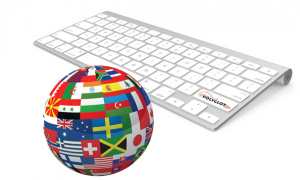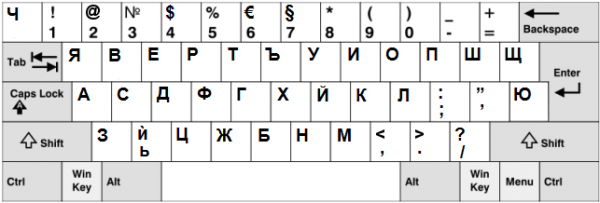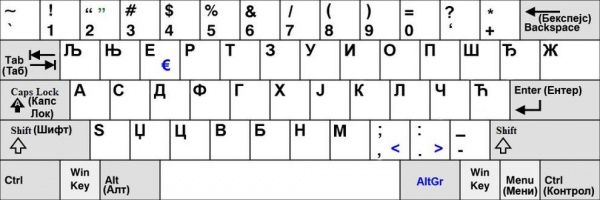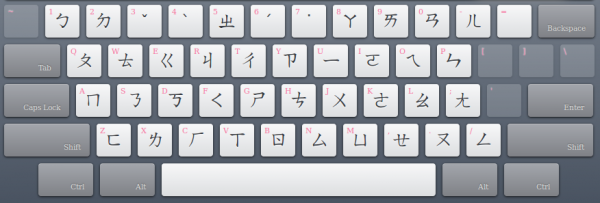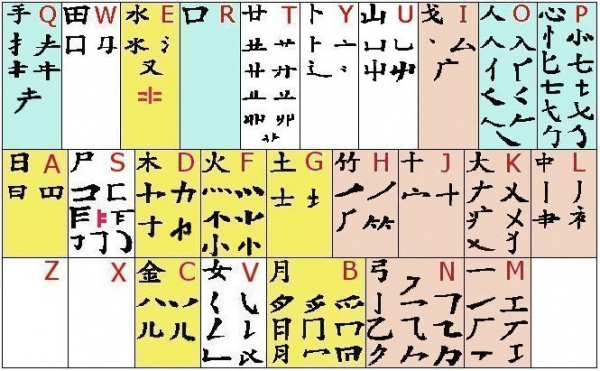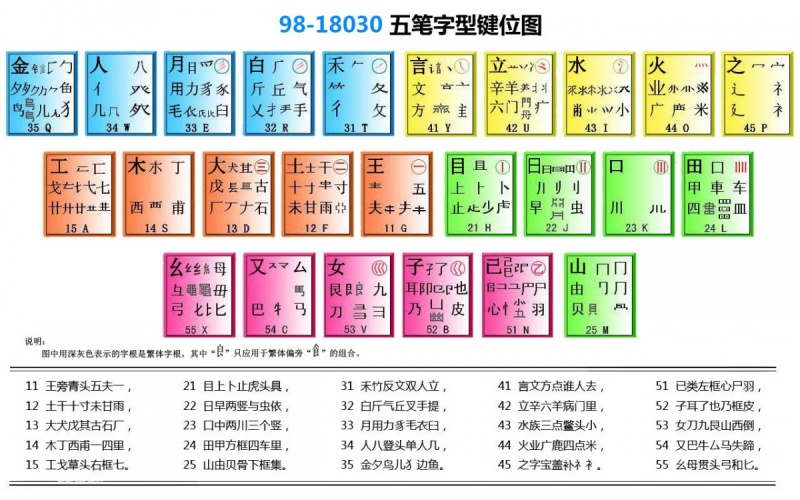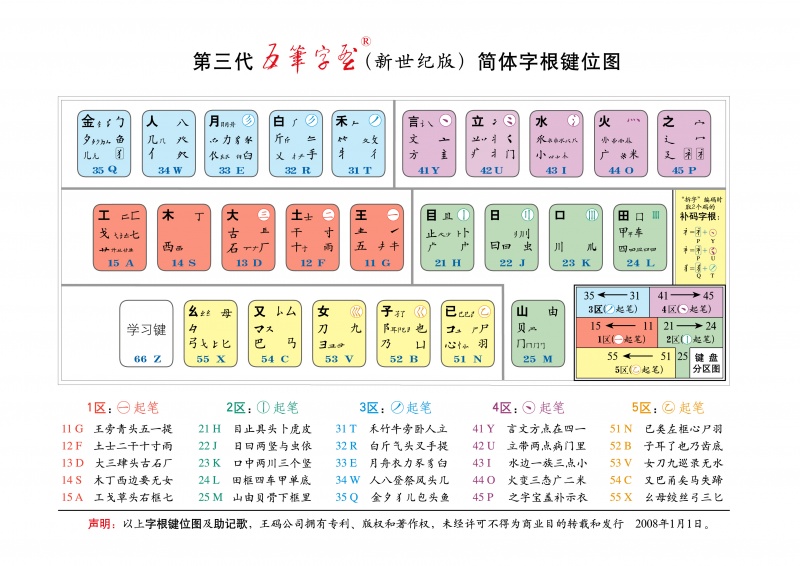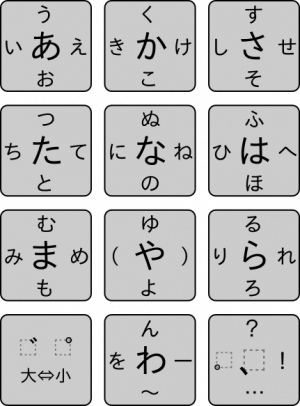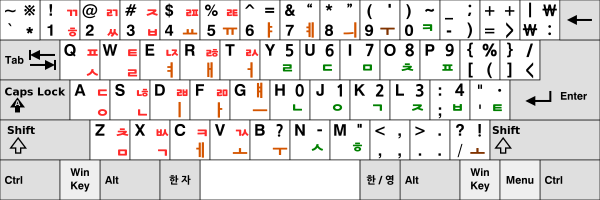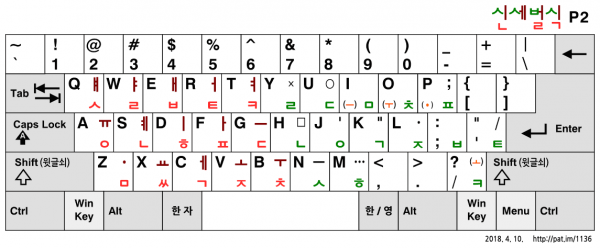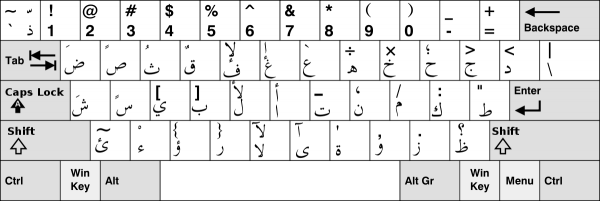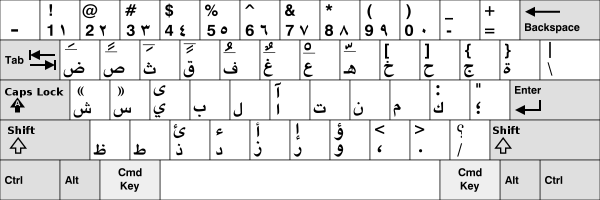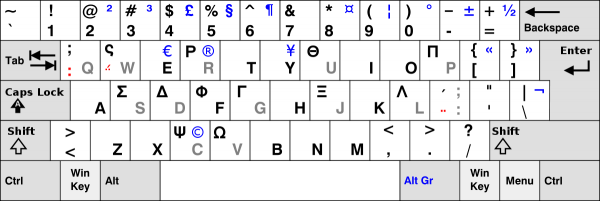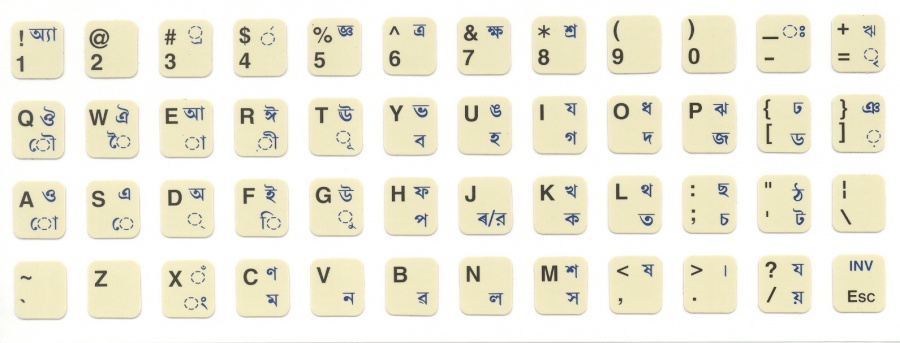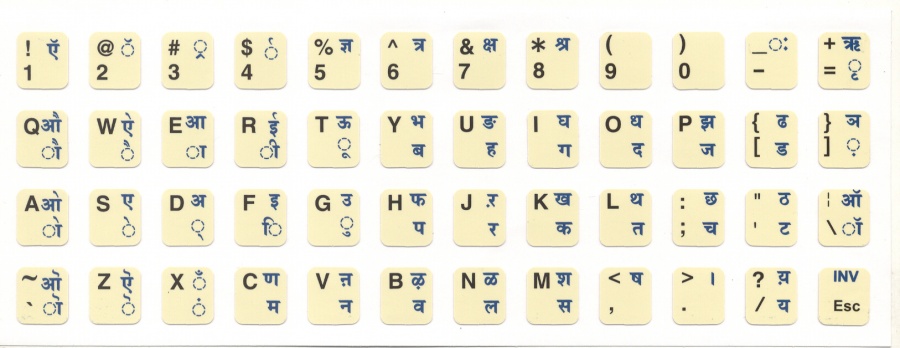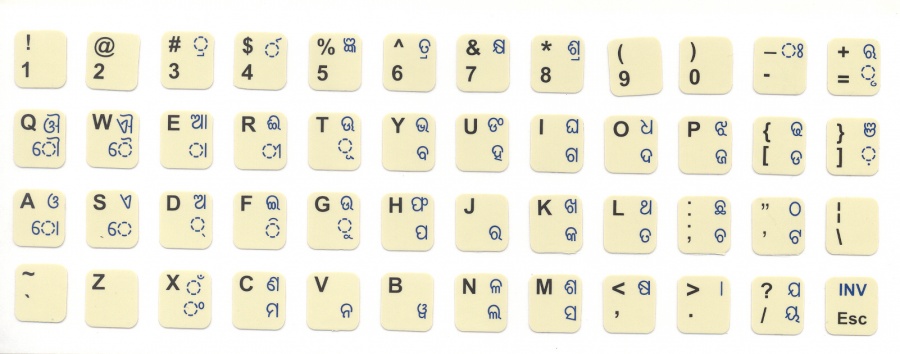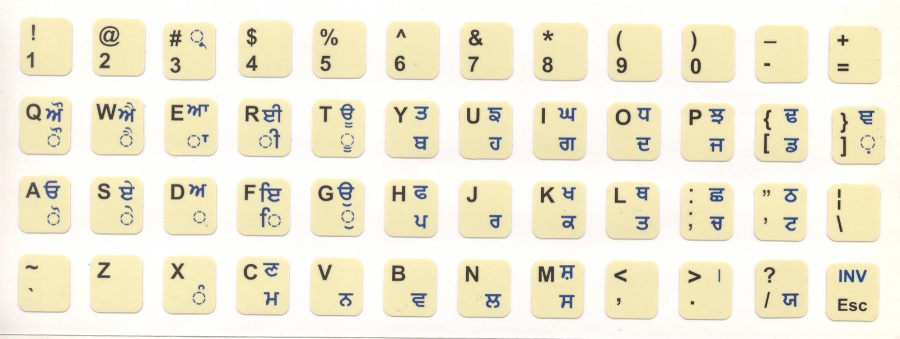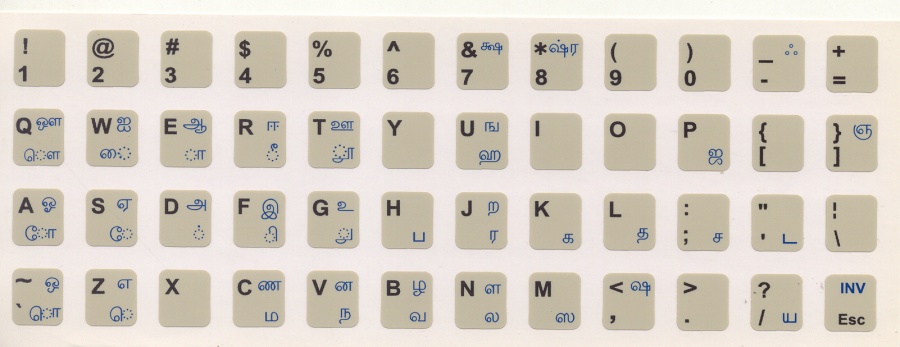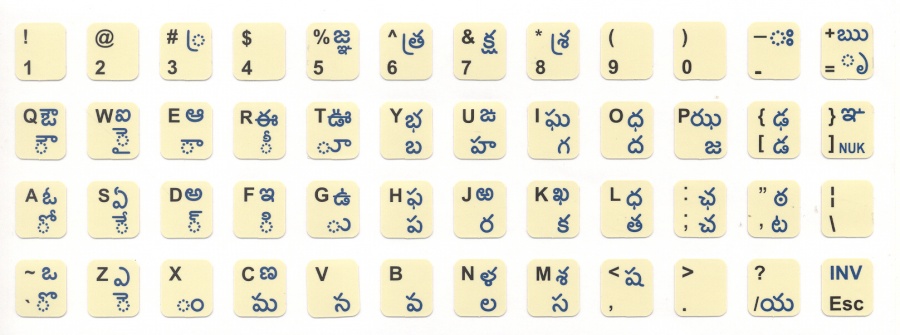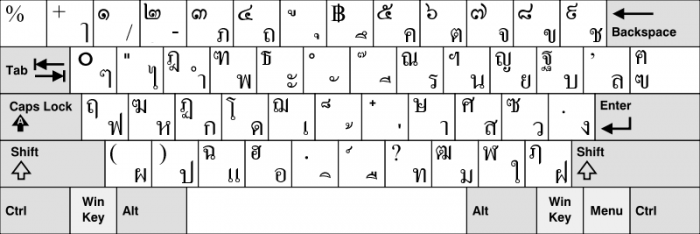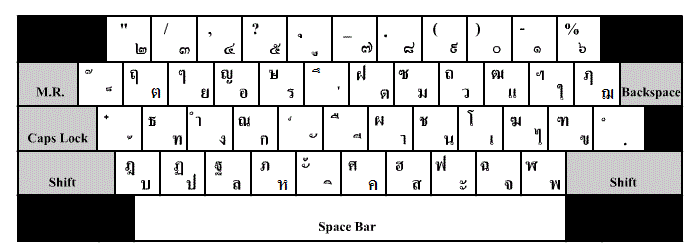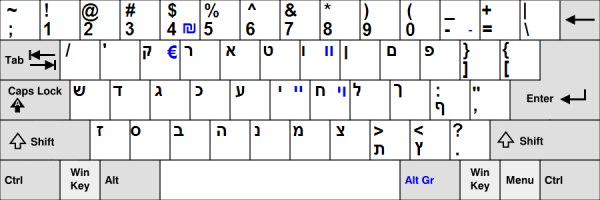Difference between revisions of "Language/Multiple-languages/Culture/Keyboards"
| Line 4: | Line 4: | ||
Hello Polyglots 😀 | Hello Polyglots 😀 | ||
On this page, we list the most popular keyboards | On this page, we list the most popular and ergonomic keyboards. | ||
Recommendations: | Recommendations: | ||
* Multilingual keyboard for Android: [https://honsoapps.appspot.com/1/ml.html Multiling O keyboard]. | *Multilingual keyboard for Android: [https://honsoapps.appspot.com/1/ml.html Multiling O keyboard]. | ||
* Typing program: [https://github.com/max-niederman/ttyper ttyper]. | *Typing program: [https://github.com/max-niederman/ttyper ttyper]. | ||
* Keyboard editor for Windows: [https://www.microsoft.com/en-us/download/details.aspx?id=102134 Microsoft Keyboard Layout Creator]. | *Keyboard editor for Windows: [https://www.microsoft.com/en-us/download/details.aspx?id=102134 Microsoft Keyboard Layout Creator]. | ||
* Keyboard editor for macOS: [https://karabiner-elements.pqrs.org/ Karabiner-Element]. | *Keyboard editor for macOS: [https://karabiner-elements.pqrs.org/ Karabiner-Element]. | ||
* Keyboard editing guidance for Linux: ''[https://www.linux.com/news/creating-custom-keyboard-layouts-x11-using-xkb/ Creating custom keyboard layouts for X11 using XKB]''. | *Keyboard editing guidance for Linux: ''[https://www.linux.com/news/creating-custom-keyboard-layouts-x11-using-xkb/ Creating custom keyboard layouts for X11 using XKB]''. | ||
== Latin == | == Latin== | ||
'''QWERTY''' | |||
It's created in the 1870s by Christopher Latham Sholes. But it's designed to avoid key stuck in typewriters, so it provides the possibility for better alternatives in computers. | It's created in the 1870s by Christopher Latham Sholes. But it's designed to avoid key stuck in typewriters, so it provides the possibility for better alternatives in computers. | ||
| Line 22: | Line 22: | ||
There are a lot of variants of it to input other languages written in Latin script. | There are a lot of variants of it to input other languages written in Latin script. | ||
'''Dvorak''' | |||
It's created by August Dvorak and William Dealey in 1936. | It's created by August Dvorak and William Dealey in 1936. | ||
Its main advantage is efficient. | Its main advantage is efficient. | ||
It also has a right-hand and a left-hand variants. | |||
'''Colemak''' | |||
It's created by Shai Coleman and released in 2006. | It's created by Shai Coleman and released in 2006. | ||
| Line 44: | Line 42: | ||
Variants include [https://forum.colemak.com/topic/519-rulemak-russian-colemak-layout/ Rulemak] and [https://forum.colemak.com/topic/1443-colemak-greek-version-in-ubuntu/ Greek Colemak]. | Variants include [https://forum.colemak.com/topic/519-rulemak-russian-colemak-layout/ Rulemak] and [https://forum.colemak.com/topic/1443-colemak-greek-version-in-ubuntu/ Greek Colemak]. | ||
'''Workman''' | |||
Its main advantage is convenience. | Its main advantage is convenience. | ||
| Line 53: | Line 50: | ||
http://workmanlayout.org/ | http://workmanlayout.org/ | ||
'''French AZERTY''' | |||
The Ministry of Culture wishes to improve the French keyboard. | The Ministry of Culture wishes to improve the French keyboard. | ||
| Line 65: | Line 56: | ||
2 new keyboards are suggested: | 2 new keyboards are suggested: | ||
'''Improved French AZERTY''' | |||
The 26 letters of the alphabet and the numbers do not change place, unlike some other signs such as certain accented vowels, at sign, braces ... | The 26 letters of the alphabet and the numbers do not change place, unlike some other signs such as certain accented vowels, at sign, braces ... | ||
| Line 76: | Line 66: | ||
The range of typographic signs is widened, to facilitate the creation without using professional software. | The range of typographic signs is widened, to facilitate the creation without using professional software. | ||
'''BÉPO''' | |||
There are already many BÉPO keyboards and its supporters say that this is the most logical layout of the keys currently available for the French language. | There are already many BÉPO keyboards and its supporters say that this is the most logical layout of the keys currently available for the French language. | ||
| Line 83: | Line 72: | ||
The counterpart is that you have to completely learn to write on a keyboard. | The counterpart is that you have to completely learn to write on a keyboard. | ||
= | {| class="wikitable sortable" | ||
!language | |||
!type | |||
!variant | |||
!image | |||
|- | |||
| | |||
| | |||
| | |||
| | |||
|- | |||
|multiple languages | |||
|QWERTY | |||
|Canadian Multilingual Standard | |||
|https://upload.wikimedia.org/wikipedia/commons/thumb/4/41/KB_Canadian_Multilingual_Standard.svg/640px-KB_Canadian_Multilingual_Standard.svg.png | |||
|- | |||
|multiple languages | |||
|QWERTY | |||
|EurKEY | |||
|https://upload.wikimedia.org/wikipedia/commons/thumb/5/52/KB_EurKEY.svg/640px-KB_EurKEY.svg.png | |||
|- | |||
|multiple languages | |||
|QWERTY | |||
|suomalainen monikielinen | |||
|https://upload.wikimedia.org/wikipedia/commons/thumb/3/35/KB_Finnish_Multilingual.svg/640px-KB_Finnish_Multilingual.svg.png | |||
|- | |||
|multiple languages | |||
|QWERTY | |||
|United States International | |||
|https://upload.wikimedia.org/wikipedia/commons/thumb/2/22/KB_US-International.svg/640px-KB_US-International.svg.png | |||
|- | |||
|Norwegian and Sámi | |||
|QWERTY | |||
|norsk med samisk | |||
|https://wikiless.org/media/wikipedia/commons/thumb/7/75/KB_NorwaySami.svg/640px-KB_NorwaySami.svg.png | |||
|- | |||
|Danish | |||
|QWERTY | |||
|Danmark | |||
|https://upload.wikimedia.org/wikipedia/commons/thumb/8/84/KB_Danish.svg/640px-KB_Danish.svg.png | |||
|- | |||
|English | |||
|QWERTY | |||
|United Kingdom | |||
|https://upload.wikimedia.org/wikipedia/commons/thumb/d/da/KB_United_Kingdom.svg/640px-KB_United_Kingdom.svg.png | |||
|- | |||
|Polish | |||
|QWERTY | |||
|Polska | |||
|https://upload.wikimedia.org/wikipedia/commons/thumb/6/6e/Polish_programmer%27s_layout.PNG/640px-Polish_programmer%27s_layout.PNG | |||
|- | |||
|Polish | |||
|QWERTZ | |||
|Polska | |||
|https://upload.wikimedia.org/wikipedia/commons/thumb/2/2c/KB_Polish_QWERTZ_PN87_commons.svg/640px-KB_Polish_QWERTZ_PN87_commons.svg.png | |||
|- | |||
|Portuguese | |||
|QWERTY | |||
|Brasil | |||
|https://upload.wikimedia.org/wikipedia/commons/thumb/1/17/KB_Portuguese_Brazil.svg/640px-KB_Portuguese_Brazil.svg.png | |||
|- | |||
|Portuguese | |||
|QWERTY | |||
|Portuguesa | |||
|https://upload.wikimedia.org/wikipedia/commons/thumb/2/2c/KB_Portuguese.svg/640px-KB_Portuguese.svg.png | |||
|- | |||
|Romanian | |||
|QWERTY | |||
|România | |||
|<img width=640 src="https://upload.wikimedia.org/wikipedia/commons/f/f0/Romanian-keyboard-layout.png> | |||
|- | |||
|Slovak | |||
|QWERTY | |||
|Slovensko | |||
|https://upload.wikimedia.org/wikipedia/commons/thumb/2/2a/KB_Slovak.svg/640px-KB_Slovak.svg.png | |||
|- | |||
|Spanish | |||
|QWERTY | |||
|España | |||
|https://upload.wikimedia.org/wikipedia/commons/thumb/7/74/KB_Spanish.svg/640px-KB_Spanish.svg.png | |||
|- | |||
|Spanish | |||
|QWERTY | |||
|Latinoamérica | |||
|https://upload.wikimedia.org/wikipedia/commons/thumb/8/8e/KB_Latin_American.svg/640px-KB_Latin_American.svg.png | |||
|- | |||
|Turkish | |||
|QWERTY | |||
|Türkiye | |||
|https://upload.wikimedia.org/wikipedia/commons/thumb/6/63/KB_Turkey.svg/640px-KB_Turkey.svg.png | |||
|- | |||
|Vietnamese | |||
|QWERTY | |||
|Việt Nam | |||
|https://wikiless.org/media/wikipedia/commons/thumb/b/b7/Vietnamese_keyboard.svg/640px-Vietnamese_keyboard.svg.png | |||
|- | |||
| | |||
| | |||
| | |||
| | |||
|} | |||
== Cyrillic == | ==Cyrillic== | ||
=== JCUKEN === | ===JCUKEN === | ||
It's commonly called Windows layout, for Russian, and there is a variant of it for Ukranian. | It's commonly called Windows layout, for Russian, and there is a variant of it for Ukranian. | ||
[[File:KB Russian.svg.png|600px]] | [[File:KB Russian.svg.png|600px]] | ||
=== Bulgarian === | ===Bulgarian=== | ||
It's based on QWERTY. | It's based on QWERTY. | ||
[[File:Bulgarian keyboard win.png|600px]] | [[File:Bulgarian keyboard win.png|600px]] | ||
=== Serbian === | ===Serbian === | ||
It's based on QWERTZ. | It's based on QWERTZ. | ||
[[File:QWERTZ Srpska tastatura.jpg|600px]] | [[File:QWERTZ Srpska tastatura.jpg|600px]] | ||
== Han == | ==Han== | ||
=== Zhuyin (Bopomofo) === | === Zhuyin (Bopomofo)=== | ||
It's a set of phonetic notes created by the Beiyang Government in the 1910s. Later it came into computers. | It's a set of phonetic notes created by the Beiyang Government in the 1910s. Later it came into computers. | ||
| Line 117: | Line 202: | ||
[[File:BPMF-Keyboard.png|600px]] | [[File:BPMF-Keyboard.png|600px]] | ||
=== Pinyin === | ===Pinyin=== | ||
It's a romanization created by many linguists in the 1950s and published by Government of China in 1958 and has been revised several times. Later it came into computers. | It's a romanization created by many linguists in the 1950s and published by Government of China in 1958 and has been revised several times. Later it came into computers. | ||
| Line 126: | Line 211: | ||
It's the most popular in China. | It's the most popular in China. | ||
=== Cangjie === | ===Cangjie=== | ||
It's created by Chu Bong-Foo and named by Chiang Wei-Kuo in 1976, to input Traditional Chinese by making characters up with parts, later it became available for Simplified Chinese, Kanji, Hanja, Hán Nôm. | It's created by Chu Bong-Foo and named by Chiang Wei-Kuo in 1976, to input Traditional Chinese by making characters up with parts, later it became available for Simplified Chinese, Kanji, Hanja, Hán Nôm. | ||
| Line 175: | Line 260: | ||
Cangjie on Linux is available through fcitx or IBus. The package names are fcitx-table-cangjie and ibus-table-cangjie. | Cangjie on Linux is available through fcitx or IBus. The package names are fcitx-table-cangjie and ibus-table-cangjie. | ||
==== Sucheng ==== | ====Sucheng==== | ||
A variant of Cangjie, only to input the initial and the final parts and then select from candidates. | A variant of Cangjie, only to input the initial and the final parts and then select from candidates. | ||
=== Wubi === | ===Wubi=== | ||
It's created by Wang Yongmin in 1986, to input Simplified Chinese by making characters up with parts. | It's created by Wang Yongmin in 1986, to input Simplified Chinese by making characters up with parts. | ||
| Line 225: | Line 310: | ||
Wubi on Linux is available through fcitx or IBus. The package names are fcitx-table-wubi and ibus-table-wubi. | Wubi on Linux is available through fcitx or IBus. The package names are fcitx-table-wubi and ibus-table-wubi. | ||
=== Handwriting input === | ===Handwriting input=== | ||
To input by handwriting recognition. | To input by handwriting recognition. | ||
Its main advantage is enabling to input characters without knowing its pronunciation (many can show it), and to input uncommon characters. | Its main advantage is enabling to input characters without knowing its pronunciation (many can show it), and to input uncommon characters. | ||
== Japanese == | ==Japanese== | ||
=== Romaji input === | ===Romaji input=== | ||
There are several types of Romanization in Japanese, in which the most widely-used is Hepburn, created by James Curtis Hepburn in 1867. Later it came into computers. | There are several types of Romanization in Japanese, in which the most widely-used is Hepburn, created by James Curtis Hepburn in 1867. Later it came into computers. | ||
| Line 239: | Line 324: | ||
Its main advantage is easy to learn. | Its main advantage is easy to learn. | ||
=== Kana input === | ===Kana input=== | ||
Its main advantage is efficient. | Its main advantage is efficient. | ||
| Line 246: | Line 331: | ||
[[File:1200px-KB Japanese.svg.png|600px]] | [[File:1200px-KB Japanese.svg.png|600px]] | ||
=== Flick input === | ===Flick input=== | ||
It's for mobile phones, input by flicking finger from a position to a direction. | It's for mobile phones, input by flicking finger from a position to a direction. | ||
| Line 255: | Line 340: | ||
[[File:Flick_keyboard_layout.svg.png|300px]] | [[File:Flick_keyboard_layout.svg.png|300px]] | ||
== Korean == | ==Korean== | ||
=== Dubeolsik === | ===Dubeolsik=== | ||
Its main advantage is easy to learn. | Its main advantage is easy to learn. | ||
| Line 264: | Line 349: | ||
[[File:1200px-KB South Korea.svg.png|600px]] | [[File:1200px-KB South Korea.svg.png|600px]] | ||
=== Sebeolsik Final === | === Sebeolsik Final=== | ||
Its main advantage is ergonomic. Its main disadvantage is using the number row and frequent need of pressing the Shift key. | Its main advantage is ergonomic. Its main disadvantage is using the number row and frequent need of pressing the Shift key. | ||
[[File:KB Sebeolsik Flnal.svg.png|600px]] | [[File:KB Sebeolsik Flnal.svg.png|600px]] | ||
=== Ahnmatae === | ===Ahnmatae=== | ||
Its main advantage is easy to learn with clear division of the first consonant, vowel and final consonant. Its main disadvantage is using non-home row frequently. | Its main advantage is easy to learn with clear division of the first consonant, vowel and final consonant. Its main disadvantage is using non-home row frequently. | ||
| Line 278: | Line 363: | ||
[[File:1280px-KB_Ahnmatae_Phonetic_Hangul_Keyboard.svg.png|600px]] | [[File:1280px-KB_Ahnmatae_Phonetic_Hangul_Keyboard.svg.png|600px]] | ||
=== New Sebeolsik === | === New Sebeolsik=== | ||
Its main advantage is clear division of the first consonant, vowel and final consonant. Its main disadvantage is burdening the left hand. | Its main advantage is clear division of the first consonant, vowel and final consonant. Its main disadvantage is burdening the left hand. | ||
| Line 291: | Line 376: | ||
[[File:KB_Sin_SeBeolSig_P2.png|600px]] | [[File:KB_Sin_SeBeolSig_P2.png|600px]] | ||
=== Romaja === | ===Romaja=== | ||
There are several types of Romanization in Korean, in which the most widely-used is Revised Romanization, created by the National Academy of the Korean Language in 2000. Later it came into computers. | There are several types of Romanization in Korean, in which the most widely-used is Revised Romanization, created by the National Academy of the Korean Language in 2000. Later it came into computers. | ||
| Line 298: | Line 383: | ||
Its main advantage is easy to learn. Its main disadvantage is causing some inconvenience for some words like “Hangeul”. | Its main advantage is easy to learn. Its main disadvantage is causing some inconvenience for some words like “Hangeul”. | ||
== Arabic == | ==Arabic == | ||
=== IBM PC Arabic Keyboard === | === IBM PC Arabic Keyboard === | ||
[[File:1200px-KB Arabic.svg.png|600px]] | [[File:1200px-KB Arabic.svg.png|600px]] | ||
=== Mac Arabic Keyboard === | ===Mac Arabic Keyboard=== | ||
[[File:1200px-KB Arabic MAC.svg.png|600px]] | [[File:1200px-KB Arabic MAC.svg.png|600px]] | ||
== Greek == | == Greek== | ||
It's based on QWERTY. | It's based on QWERTY. | ||
[[File:1200px-KB Greek.svg.png|600px]] | [[File:1200px-KB Greek.svg.png|600px]] | ||
== Brahmic scripts == | ==Brahmic scripts== | ||
=== Inscript === | ===Inscript === | ||
It's a set of keyboards standardized by Government of India in 1986. | It's a set of keyboards standardized by Government of India in 1986. | ||
==== Bangla ==== | ====Bangla==== | ||
[[File:Bangla-Inscript-Layout.jpg|900px]] | [[File:Bangla-Inscript-Layout.jpg|900px]] | ||
==== Devanagari ==== | ====Devanagari==== | ||
[[File:Devnagari-Inscript-Layout.jpg|900px]] | [[File:Devnagari-Inscript-Layout.jpg|900px]] | ||
==== Gujarati ==== | ====Gujarati==== | ||
[[File:Gujarati-Inscript-Layout.jpg|900px]] | [[File:Gujarati-Inscript-Layout.jpg|900px]] | ||
==== Kannada ==== | ====Kannada==== | ||
[[File:Kannada-Inscript-Layout.jpg|900px]] | [[File:Kannada-Inscript-Layout.jpg|900px]] | ||
==== Malayalam ==== | ====Malayalam==== | ||
[[File:Malayalam-Inscript-Layout.jpg|900px]] | [[File:Malayalam-Inscript-Layout.jpg|900px]] | ||
==== Oriya ==== | ====Oriya==== | ||
[[File:Oriya-Inscript-Layout.jpg|900px]] | [[File:Oriya-Inscript-Layout.jpg|900px]] | ||
==== Punjabi ==== | ====Punjabi==== | ||
[[File:Punjabi-Inscript-Layout.jpg|900px]] | [[File:Punjabi-Inscript-Layout.jpg|900px]] | ||
==== Tamil ==== | ====Tamil==== | ||
[[File:Tamil-Inscript-Layout.jpg|900px]] | [[File:Tamil-Inscript-Layout.jpg|900px]] | ||
==== Telugu ==== | ====Telugu ==== | ||
[[File:Telugu-Inscript-Layout.jpg|900px]] | [[File:Telugu-Inscript-Layout.jpg|900px]] | ||
== Thai == | ==Thai== | ||
=== Kedmanee === | ===Kedmanee === | ||
It's created for Thai. | It's created for Thai. | ||
[[File:Thai keyboard layout.png|700px]] | [[File:Thai keyboard layout.png|700px]] | ||
=== Pattachote === | ===Pattachote=== | ||
It's created by Sarit Pattachote for Thai. | It's created by Sarit Pattachote for Thai. | ||
[[File:Pattajoti.gif|700px]] | [[File:Pattajoti.gif|700px]] | ||
== Hebrew == | ==Hebrew == | ||
[[File:Hebrew keyboard layout.png|600px]] | [[File:Hebrew keyboard layout.png|600px]] | ||
==*Author== | ==*Author== | ||
[https://polyglotclub.com/member/GrimPixel | [https://polyglotclub.com/member/GrimPixel GrimPixel] | ||
Revision as of 08:03, 25 June 2022
Hello Polyglots 😀
On this page, we list the most popular and ergonomic keyboards.
Recommendations:
- Multilingual keyboard for Android: Multiling O keyboard.
- Typing program: ttyper.
- Keyboard editor for Windows: Microsoft Keyboard Layout Creator.
- Keyboard editor for macOS: Karabiner-Element.
- Keyboard editing guidance for Linux: Creating custom keyboard layouts for X11 using XKB.
Latin
QWERTY
It's created in the 1870s by Christopher Latham Sholes. But it's designed to avoid key stuck in typewriters, so it provides the possibility for better alternatives in computers.
Its main advantage is the overwhelming amount of user, most keyboard shortcuts are designed according to it.
There are a lot of variants of it to input other languages written in Latin script.
Dvorak
It's created by August Dvorak and William Dealey in 1936.
Its main advantage is efficient.
It also has a right-hand and a left-hand variants.
Colemak
It's created by Shai Coleman and released in 2006.
Its main advantage is convenient and multilingual.
Official website:
Variants include Rulemak and Greek Colemak.
Workman
Its main advantage is convenience.
Official website:
French AZERTY
The Ministry of Culture wishes to improve the French keyboard.
2 new keyboards are suggested:
Improved French AZERTY
The 26 letters of the alphabet and the numbers do not change place, unlike some other signs such as certain accented vowels, at sign, braces ...
The point becomes accessible without passing the capital key.
Accented uppercase letters are also made possible.
The range of typographic signs is widened, to facilitate the creation without using professional software.
BÉPO
There are already many BÉPO keyboards and its supporters say that this is the most logical layout of the keys currently available for the French language.
The counterpart is that you have to completely learn to write on a keyboard.
| language | type | variant | image |
|---|---|---|---|
| multiple languages | QWERTY | Canadian Multilingual Standard | 
|
| multiple languages | QWERTY | EurKEY | 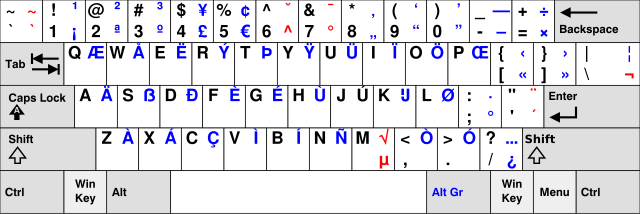
|
| multiple languages | QWERTY | suomalainen monikielinen | 
|
| multiple languages | QWERTY | United States International | 
|
| Norwegian and Sámi | QWERTY | norsk med samisk | 
|
| Danish | QWERTY | Danmark | 
|
| English | QWERTY | United Kingdom | 
|
| Polish | QWERTY | Polska | 
|
| Polish | QWERTZ | Polska | 
|
| Portuguese | QWERTY | Brasil | 
|
| Portuguese | QWERTY | Portuguesa | 
|
| Romanian | QWERTY | România | 
|
| Slovak | QWERTY | Slovensko | 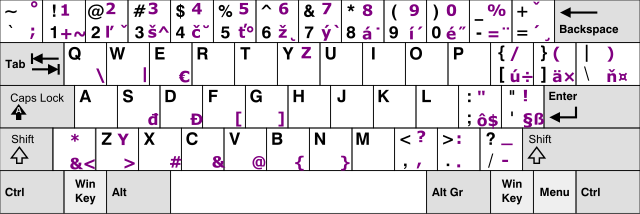
|
| Spanish | QWERTY | España | 
|
| Spanish | QWERTY | Latinoamérica | 
|
| Turkish | QWERTY | Türkiye | 
|
| Vietnamese | QWERTY | Việt Nam | 
|
Cyrillic
JCUKEN
It's commonly called Windows layout, for Russian, and there is a variant of it for Ukranian.
Bulgarian
It's based on QWERTY.
Serbian
It's based on QWERTZ.
Han
Zhuyin (Bopomofo)
It's a set of phonetic notes created by the Beiyang Government in the 1910s. Later it came into computers.
Its main advantage is easy to learn.
It's the most popular in Taiwan.
Pinyin
It's a romanization created by many linguists in the 1950s and published by Government of China in 1958 and has been revised several times. Later it came into computers.
It follows the system's keyboard, usually QWERTY.
Its main advantage is easy to learn.
It's the most popular in China.
Cangjie
It's created by Chu Bong-Foo and named by Chiang Wei-Kuo in 1976, to input Traditional Chinese by making characters up with parts, later it became available for Simplified Chinese, Kanji, Hanja, Hán Nôm.
Mr. Chu waived his copyright for common good.
Its main advantage is efficient, being able to input uncommon characters and to input characters without knowing its pronunciation.
There are mainly two versions, 3 and 5, the latter is more reasonable.
The Cangjie coming with Windows 10 is version 3.
Layout of Cangjie:
Secondary characters (the red are added in Cangjie 5):
The inventor's website:
Software 倉頡平台 for Windows:
http://www.chinesecj.com/forum/forum.php?mod=viewthread&tid=193324
Cangjie 5 practice software 倉頡打字通:
Cangjie course, based on version 3
http://dylansung.tripod.com/methods/cangjie.htm:
Cangjie course in Chinese:
https://zh.wikibooks.org/wiki/%E5%80%89%E9%A0%A1%E8%BC%B8%E5%85%A5%E6%B3%95
Cangjie 3 code dictionary:
http://input.foruto.com/cjdict/Search_1.php
Cangjie 5 code dictionary:
http://www.chinesecj.com/cj5dict/
Cangjie on Linux is available through fcitx or IBus. The package names are fcitx-table-cangjie and ibus-table-cangjie.
Sucheng
A variant of Cangjie, only to input the initial and the final parts and then select from candidates.
Wubi
It's created by Wang Yongmin in 1986, to input Simplified Chinese by making characters up with parts.
Its main advantage is efficient and being able to input characters without knowing its pronunciation.
There are mainly three versions, 86, 98 and New-century. The former the more popular, but the latter the more reasonable.
The Wubi coming with Windows 10 is version 86, but unofficial thesauruses for other Wubi input software are available.
The layout of Wubi 86:
The layout of Wubi 98:
The layout of Wubi New-Century:
Software 极点五笔 for Windows:
Wubi practice software 五笔打字通 for 86 and 王码打字通 for 98:
Wubi course, based on version 86:
http://chinesemac.org/wubi/xing.html
Wubi course in Chinese, based on version 86:
http://soft.zol.com.cn/22/224137_all.html
Wubi code dictionary:
http://www.wangma.com.cn/query/wmhz1.asp
Official website:
Wubi on Linux is available through fcitx or IBus. The package names are fcitx-table-wubi and ibus-table-wubi.
Handwriting input
To input by handwriting recognition.
Its main advantage is enabling to input characters without knowing its pronunciation (many can show it), and to input uncommon characters.
Japanese
Romaji input
There are several types of Romanization in Japanese, in which the most widely-used is Hepburn, created by James Curtis Hepburn in 1867. Later it came into computers.
It follows the system's keyboard, usually QWERTY.
Its main advantage is easy to learn.
Kana input
Its main advantage is efficient.
It's the most popular in Japan.
Flick input
It's for mobile phones, input by flicking finger from a position to a direction.
Its main advantage is efficient.
It's the most popular in Japan.
Korean
Dubeolsik
Its main advantage is easy to learn.
It's the most popular in Korea.
Sebeolsik Final
Its main advantage is ergonomic. Its main disadvantage is using the number row and frequent need of pressing the Shift key.
Ahnmatae
Its main advantage is easy to learn with clear division of the first consonant, vowel and final consonant. Its main disadvantage is using non-home row frequently.
Official website (currently down):
New Sebeolsik
Its main advantage is clear division of the first consonant, vowel and final consonant. Its main disadvantage is burdening the left hand.
Its final version is unsettled yet.
Official blog category:
https://pat.im/category/%ED%95%9C%EA%B8%80%20%EC%9E%90%ED%8C%90/%EC%8B%A0%EC%84%B8%EB%B2%8C%EC%8B%9D
Latest version:
Romaja
There are several types of Romanization in Korean, in which the most widely-used is Revised Romanization, created by the National Academy of the Korean Language in 2000. Later it came into computers.
It follows the system's keyboard, usually QWERTY.
Its main advantage is easy to learn. Its main disadvantage is causing some inconvenience for some words like “Hangeul”.
Arabic
IBM PC Arabic Keyboard
Mac Arabic Keyboard
Greek
It's based on QWERTY.
Brahmic scripts
Inscript
It's a set of keyboards standardized by Government of India in 1986.
Bangla
Devanagari
Gujarati
Kannada
Malayalam
Oriya
Punjabi
Tamil
Telugu
Thai
Kedmanee
It's created for Thai.
Pattachote
It's created by Sarit Pattachote for Thai.
